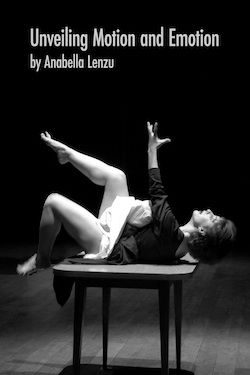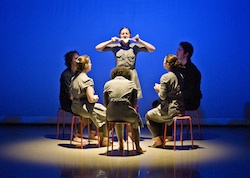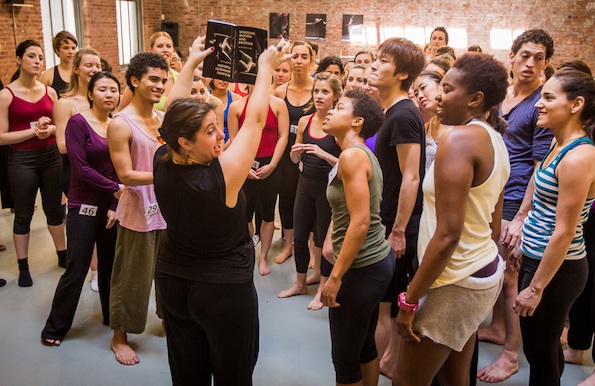“I think that to dance is to know oneself inside and out.” — Anabella Lenzu, Unveiling Motion and Emotion
By Leah Gerstenlauer.
More often than not, the career of a dancer begins at an early age. But however strong the passion, however admirable the ambition that sparks the vocation, years of training, of dream chasing, of struggling to find and secure a foothold in a tremendously fickle industry can lead any artist to lose sight of her intent.
This has not been the case for dancer, teacher, choreographer and writer Anabella Lenzu, whose adventurous work life has spanned three continents and several decades. Her drive to create, perform and share her hard-earned wisdom only intensifies as she continues to explore the calling that first bewitched her as a free-spirited five-year-old. Lenzu’s latest project, Unveiling Motion and Emotion, is a bilingual compilation of her writings on dancing, teaching and learning in South America, the United States and Europe.

Anabella Lenzu’s book, ‘Unveiling Motion and Emotion.’ Cover photo by Todd Carroll.
The author’s enthusiastic commitment to her work is palpable throughout, and she insists that “this book is only the beginning… I’ve always been inspired by books. I’m from a small town where all we had was books. I felt that I needed to put my years of cumulative experience in writing.”
With this collection, Lenzu is most keen to impart her wisdom as a teacher, both of dance technique and of the technique behind teaching dance. She led her first class in her home country of Argentina at age 15, and at age 18, founded L’Attelier, a school for dancers of all skill levels. Today — nearly 20 years later — Lenzu still considers herself a student as much as a teacher, and views her work in the classroom as a vital responsibility.
“To teach is to be true to yourself, to acknowledge your darkest corners and your brightest moments,” Lenzu declares in her book. “Teaching requires constant internal growth, a thirst to grow, to improve, to develop and to evolve. A good teacher is an excellent student.”
One significant lesson Lenzu has learned in her travels is that every educational system has its flaws, and that constructive comparison and constant reassessment are crucial in attempting to ameliorate them. She observes that European training offers structure, but little freedom; that schooling in the United States celebrates freedom, but generally lacks in structure; and that there is so little funding for the arts in Argentina that teachers, choreographers and performers alike can almost expect to lose money by embarking on careers in dance. Lenzu acknowledges that there is no quick fix for such concerns, embedded as they are in cultural, political and ideological frameworks. Yet to simply accept the status quo goes against her nature, her upbringing and her own dance education.

Anabella Lenzu/DanceDrama in performance. Photo by Todd Carroll.
“If we don’t question the system, why are we artists?” Lenzu wonders. “We need to challenge and to create discussion. People in America are scared of discussion… But we are not just bodies; we are not just theories. We have brains and shouldn’t be shy of discussion.”
Lenzu’s philosophy on training extends to her work as a choreographer and as artistic director of her own company, Anabella Lenzu/DanceDrama. As its name implies, the New York City-based group melds modern dance with theater, affirming the innate connection between the two performance genres while challenging her audiences’ and her dancers’ preconceptions of both. For Lenzu, the choreographic process is more than a mere outlet for her own creativity; it is an extension of her teaching career, an opportunity to bridge her students’ experiences in the classroom with their appearances on stage.
“Nothing makes me feel more accepted and respected than sharing my work with others,” writes Lenzu. “It is an honor for me to be able to sustain and support dancers in the delicate task of cultivating their awareness of themselves as individuals, becoming thankful for their strengths and accepting of their weaknesses.”
Whether writing, leading a class or staging new choreography, Lenzu’s mission remains the same: to foster a more mindful, more kinetic, more connected dance community — and to keep moving with meaning for years to come.
To read more about Anabella Lenzu, her new book and her company, visit Anabellalenzu.com.
Photo (top): Anabella Lenzu teaching a dance class. Photo by Todd Carroll.















